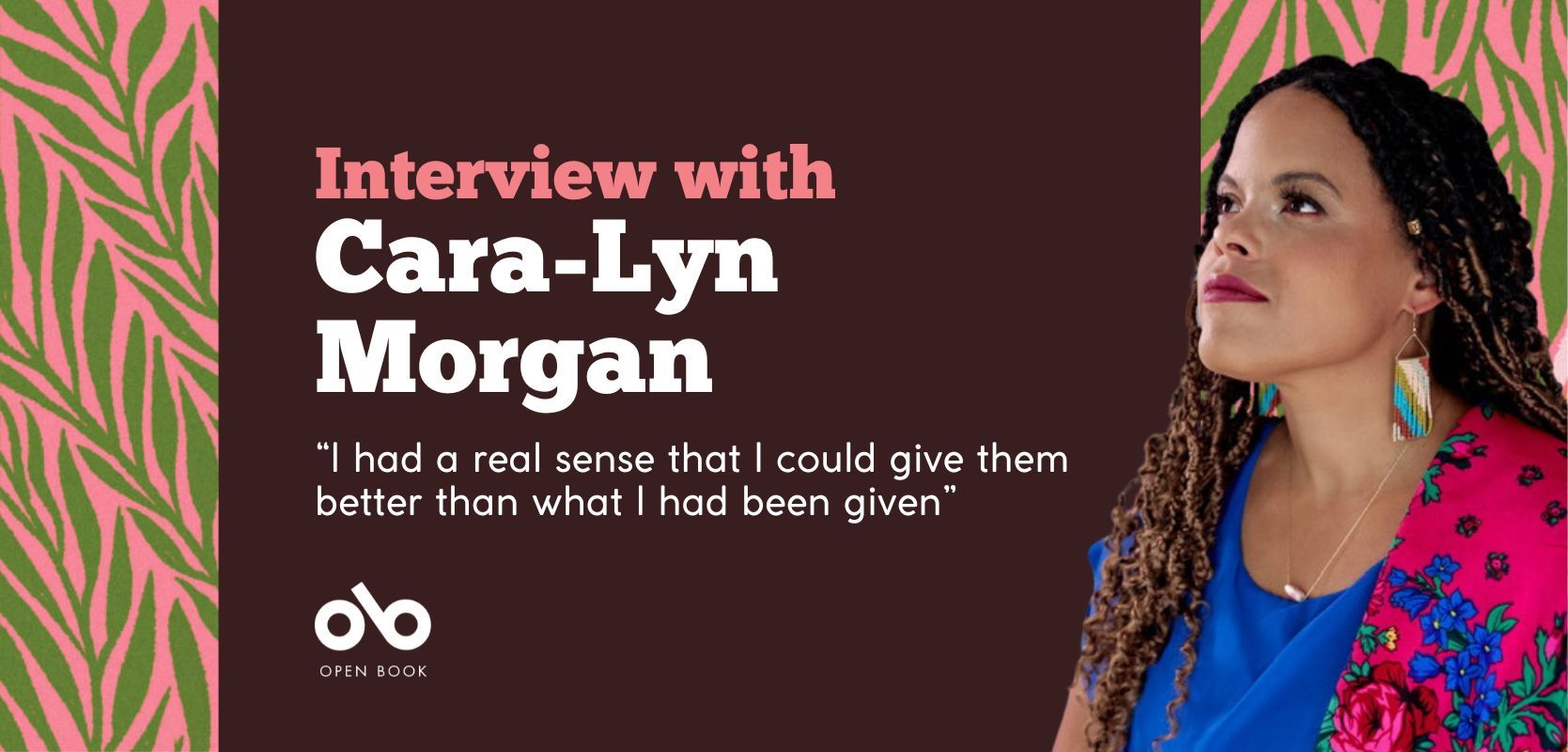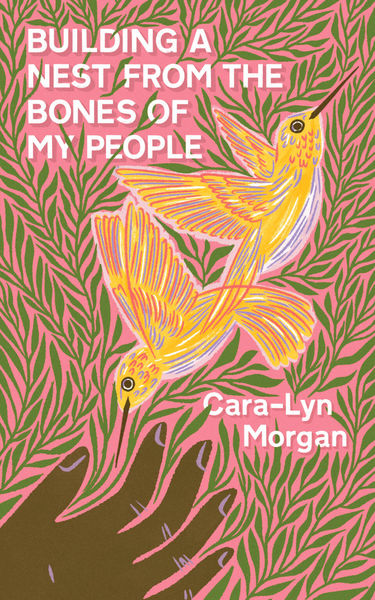Cara-Lyn Morgan Navigates the Trauma of Abuse While Building a Better Future for Her Child in Her Fiery New Collection
When Cara-Lyn Morgan courageously disclosed generations of abuse that had been hidden and sheltered in her family, she found herself estranged from people who should have protected her. It wasn't until she became pregnant with her daughter that the full consequences of her sacrifice became clear: that she would have to navigate the process of becoming a mother, and protecting and loving her child, without the support of extended family or a safe model in her past.
But Morgan's remarkable ability to find beauty led her to discovering a way to extract the good memories and uplifting traditions she had grown up with, while actively navigating the trauma of abuse, in order to create not only a cherished new life but also her appropriately (and beautifully) titled poetry collection, Building a Nest From the Bones of My People (Invisible Publishing).
Engaging with motherhood, history, and the fallout of exposing abuse in tight-knit family settings, Building a Nest From the Bones of My People is a poetic roadmap to breaking cycles while resisting colonial pressures. Crackling with power and fiery resistance, the collection reckons with what we owe to our children and the strength it takes to choose truth-telling and protection of the innocent in even the most difficult moments.
We were honoured to speak with Cara-Lyn about the collection as part of our Line & Lyric series for poets. She told us about how her singular title came to her as she ruminated on "laying the ground work for the generations who would come after", how each of her collections have sparked from pivotal moments in her life, and why it is important to her for her family to know that "telling this story was something I was doing for them, and not doing to them".
Open Book:
Can you tell us about this collection and how it came to be?
Cara-Lyn Morgan:
I started writing this collection while navigating my early days of marriage which corresponded with my first experience of pregnancy. When I discovered I was pregnant, in the days following my wedding, I was suddenly overwhelmed with the reality that I would be navigating motherhood in the wake of estrangement from my loving extended family as a result of the disclosure of generations of abuse. I used writing to cope with this loss, as well as to try and reconcile my own doubts around my suitability as a parent. I had to reckon with what I did or did not know both as a child and as an adult, where I had failed to protect those who came after me, and the trauma of my own grooming which enabled these abuses to continue. Was I even qualified to be a mother now? A wife? This book is about loss, yes, and trauma. It’s about coming to terms with the darkness of our memories, but it is also about hope. It is about sacrifice and protection. It was an exercise in healing, as good art is often good medicine.
OB:
Can you tell us a bit about how you chose your title?
CLM:
Strangely, the title came to me before the collection was complete. As I processed my own losses, and came to terms with what it was I was willing to pass along to my children, the title became very clear. Of course we were extricating ourselves from the intergenerational traumas of our family, but we were also laying the ground work for the generations who would come after. I had a real sense that I could give them better than what I had been given, and that I could spare them the manipulation that comes from a climate of abuse but also that I could salvage the good memories and good traditions as part of their narrative. When my daughter was born, I felt I was building her a new nest from the old bones of our family—one that would be safe for her, protect her as she grew, and bring her (and me) peace.
OB:
Did you write the poems individually and begin assembling this collection from stand-alone pieces…
CLM:
I begin all my work by journaling. I have always kept a journal as long as I knew how to write, and years ago a counsellor taught me to use journals as a tool to navigate the complex emotions of my childhood. So this is a tool I use to this day. I begin all my writing with a pen and paper. In this case, I was using my journal to try and comprehend the very confusing reality I had found myself in. All of my work thus far has centred around a singular moment in my life—my first book was a death in my family, the second was a life-altering accident, and so I suppose my jumping off point has always been a pivotal moment in my own narrative.
Your CanLit News
Subscribe to Open Book’s newsletter to get local book events, literary content, writing tips, and more in your inbox
OB:
What’s more important, the way a poem opens or the way it ends?
CLM:
I love a good poetic ending. I believe that the most impactful pieces are ones that end on a gut-punch. I look at poetic openings as a jumping off pointing, or the moment when you spring forward into a leap. The endings are the moment you feel in your chest, they are the thing that haunts and the thing that sticks. I apply the same intention to line endings and stanza breaks, where I can. I was lucky enough to have been taught by Lorna Crozier, who is a master at line endings and by Tim Lilburn who is a master at the riddle of the line, and these two remain largely influential in my editing and finishing process.
OB:
Who did you dedicate this book to and why?
CLM:
I dedicated the book to my child, my sisters, and “all of us” which, to me, was a way of signalling to the family that telling this story was something I was doing for them, and not doing to them. I wanted them to understand that this was not an act of punishment but rather protection, and that it was drawn from a space of love. The all of us in the dedication includes those who came before and those who will come after, and it was a way to show that this is about family and not about destruction. Because my sisters were steadfast in their support and in believing the survivors who dared to speak their truths, I wanted to write a story that (although it is my own) they could relate to, that they could use as a mechanism for healing, and as a physical manifestation that they are never alone. We are three parts of a strong braid.
OB:
For you, is form freedom or constraint in poetry?
CLM:
I am, in general, a free verse writer and this is rooted in my interest in poetic lines and line endings. Its been my experience that when I focus too greatly on the form, I often sacrifice the writing to fit into a particular form. For me, I love to read collections of modern poets who use form in a fresh way and who are able to maintain the form through their entire collection, but I have yet to be successful in this exercise in my own writing. I have delved in to some form work but for the most part I do find it hard to stay within the rules. I think this is somewhat in my nature as a person as well as a writer—though I am generally risk adverse and prefer to know and understand rules—I often enjoy the freedom of colouring outside of the lines, so to speak. I do not enjoy bending my work to fit a formula but I do enjoy knowing what the formula is.
OB:
What are you working on next?
CLM:
I’m really excited to be travelling with one of my siblings and several cousins to return to our family homestead in Trinidad this winter, and I am planning to collect stories that will hopefully evolve into a new collection of poetry. Given the opportunity to speak with my elders, I want to learn more family history from my paternal side, but also the rich mythologies of the West Indies. I am hoping for stories of the succouyant, the jumbies, and the douen (a creature who walks on backward feet), but also stories of my father as boy as told by his still-living siblings. I think I have spent a lot of time with my feet in the prairies, which has been a beautiful and painful journey, and now I am excited to settle in to the white sand of another place my bones remember.
________________________________________________
Cara-Lyn Morgan comes from both Indigenous (Métis) and Immigrant (Trinidadian) roots in the place known as Turtle Island and Canada. She was born in Oskana, known now as Regina, Saskatchewan, and lives, works, and gardens, in the traditional territories of the Anishinaabeg, Haudenosaunee, Huron-Wendat, and Mississaugas of the Credit peoples. Her debut collection of poetry, What Became My Grieving Ceremony, won the 2015 Fred Cogswell Award for Poetic Excellence. Her second collection, Cartograph, explores healing, cultural duality, and colonization.





